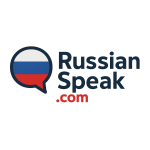Understanding manufacturing and production vocabulary in Russian is essential for industry professionals. Key terms such as “оптимизация процессов” and “контроль качества” play a significant role in effective communication and collaboration. This knowledge not only aids in steering local markets but is also vital for successful international partnerships. As businesses expand globally, the importance of mastering this vocabulary becomes increasingly evident. What specific terms and concepts will shape the future of manufacturing in a global context?
Table of Contents
ToggleKey Manufacturing Terms

Understanding key manufacturing terms is essential for professionals and managers throughout the industry. Mastery of this specialized language enables clear communication on the shop floor, efficient problem-solving, and collaboration across departments. In an environment where precision and efficiency are critical, knowing the right terminology helps avoid costly misunderstandings and errors.
For example, lean manufacturing — known in Russian as “бережливое производство” — is more than just a set of tools; it is a comprehensive management philosophy. Lean focuses on eliminating waste (“муда”), optimizing processes, and delivering maximum value to the customer. Concepts like Kaizen (“кайдзен” — постоянное совершенствование) and Just-In-Time (JIT) (“точно вовремя”) are central to lean, promoting continuous improvement and streamlining inventory management.
Automation has transformed modern manufacturing. The integration of robotic systems (“роботизированные системы”), programmable logic controllers (PLCs) (“программируемые логические контроллеры”), and computer numerical control (CNC) (“числовое программное управление”) machines has boosted productivity and quality. Understanding terms such as system integration (“системная интеграция”) and machine vision (“машинное зрение”) is critical for implementing smart factories and the principles of Industry 4.0 (“Индустрия 4.0”). These advancements enable real-time data monitoring, predictive maintenance, and flexible production lines.
Quality control is another vital area, with phrases like Six Sigma (“Шесть Сигм”) and statistical process control (SPC) (“статистическое управление процессами”) driving efforts to reduce defects and ensure product consistency. Familiarity with these concepts allows professionals to interpret data, implement corrective actions, and meet stringent industry standards.
Some foundational manufacturing concepts include:
- Bill of Materials (BOM) (“ведомость материалов”): A detailed list of raw materials, components, and assemblies required for production.
- Supply Chain Management (“управление цепочкой поставок”): Coordinating the flow of materials and information from suppliers to customers.
- Total Productive Maintenance (TPM) (“тотальное обслуживание оборудования”): Strategies to maximize equipment effectiveness and minimize downtime.
- Work-in-Progress (WIP) (“незавершенное производство”): Materials and products that are in the middle of the production process but not yet finished.
As technology evolves — with the spread of digital twins (“цифровые двойники”), advanced analytics, and additive manufacturing (“аддитивное производство”, also known as 3D-printing) — staying current with terminology is indispensable. This expertise paves the way for professional growth, innovation, and the creation of more agile and resilient manufacturing systems. Confident use of these terms demonstrates competence, supports career development, and contributes to operational excellence in a competitive global marketplace.
![]()
Production Processes Vocabulary
A strong command of production processes vocabulary is crucial for anyone involved in manufacturing, engineering, or operations management. These core terms and concepts form the backbone of how products are efficiently designed, produced, and delivered to customers.
Lean Production (бережливое производство) is a philosophy and methodology aimed at reducing waste (потери) and increasing value for the customer. Originating from the Toyota Production System in Japan, lean emphasizes continuous improvement (кайдзен), just-in-time delivery (точно вовремя), and the elimination of any steps or materials that do not add value to the final product. Lean tools include value stream mapping (картирование потока создания ценности), 5S workplace organization (система 5С), and kanban scheduling systems (канбан). Companies practicing lean benefit from lower costs, faster response times, and higher product quality.
Process Optimization (оптимизация процессов) involves systematically analyzing and refining manufacturing operations to maximize efficiency and product quality. Techniques might include automation (автоматизация), robotics (роботизация), or data analytics (анализ данных) to monitor performance and identify inefficiencies. Process optimization frequently targets reducing cycle times (сокращение производственного цикла), lowering defect rates (уменьшение дефектов), and maintaining consistent output quality (стабильное качество продукции). Companies often utilize real-time monitoring systems and digital twins (цифровые двойники) to simulate improvements before implementation.
Other essential production concepts:
- Batch Production (пакетное производство): This method produces items in specific quantities or groups rather than continuously. It is ideal for customized products or when demand does not justify mass production. For instance, bakeries often use batch processes to produce different types of bread.
- Continuous Production (непрерывное производство): Used in sectors where demand is constant, such as chemical manufacturing or paper mills. Raw materials are supplied without interruption, and production lines run 24/7 to ensure steady output. This approach achieves high efficiency but requires significant investment in equipment.
- Six Sigma (Шесть сигм): A rigorous, data-driven approach to minimizing defects and variability in processes. Six Sigma practitioners use tools like DMAIC (Define, Measure, Analyze, Improve, Control — Определить, Измерить, Проанализировать, Улучшить, Контролировать) and statistical analysis to achieve near-zero defects.
- Total Quality Management (TQM) (всеобщее управление качеством): A holistic management philosophy where every employee is responsible for maintaining high standards at all stages of production. TQM encourages a culture of continuous improvement and customer satisfaction.
- Just-in-Time (JIT) (система «точно вовремя»): Inventory arrives exactly when needed in the production process, reducing storage costs and minimizing waste. This system requires tight coordination with suppliers and reliable logistics.
- Bottleneck (узкое место): Any stage in the process where the flow of production is slowed or limited, reducing overall capacity. Identifying bottlenecks is essential for improving throughput; common solutions include adding resources or redesigning processes.
- Standard Operating Procedure (SOP) (стандартная операционная процедура): Written guidelines that specify exactly how tasks should be performed to ensure consistency and compliance with quality standards. SOPs are vital for training new staff and maintaining safety.
Mastering these key terms not only enhances communication within manufacturing and engineering teams but also empowers organizations to implement industry best practices. Ultimately, this understanding drives greater efficiency, superior quality, and a competitive edge in today’s fast-paced market.
Machinery and Equipment Terms
Machinery and equipment are central to modern manufacturing, forming the foundation for productivity, product quality, and technological advancement. A deep understanding of the terminology related to machinery and equipment not only streamlines communication but is also essential for strategic planning, safety, and maximizing operational efficiency.
Machine maintenance (техническое обслуживание оборудования) encompasses a range of practices aimed at keeping equipment in peak working order and avoiding costly failures. There are several main maintenance strategies:
- Preventive Maintenance (планово-предупредительный ремонт): This approach involves scheduled inspections and servicing, such as lubrication (смазка), cleaning (очистка), and replacing worn parts (замена изношенных деталей). Preventive maintenance is based on manufacturer recommendations or experience and aims to catch problems before they result in breakdowns.
- Predictive Maintenance (предиктивное обслуживание): Using real-time monitoring technologies like vibration analysis (анализ вибрации), temperature sensors (датчики температуры), and oil analysis (анализ масла), predictive maintenance identifies signs of wear or malfunction before a failure happens. This method helps optimize maintenance intervals and reduces unnecessary interventions.
- Corrective Maintenance (аварийный ремонт): Carried out after equipment has already failed or a fault is detected, corrective maintenance is reactive by nature. While unavoidable at times, a heavy reliance on this method can increase repair costs and prolong downtime (простой оборудования).
Key benefits of effective maintenance include:
- Fewer unexpected breakdowns and emergencies
- Extended equipment lifespan (срок службы оборудования)
- Improved safety for workers (безопасность труда)
- Consistent product quality (качество продукции) by keeping machines within operational specifications
Equipment Efficiency
Equipment efficiency (эффективность оборудования) is crucial for competitive manufacturing. The most widely used metric is Overall Equipment Effectiveness (OEE — общая эффективность оборудования), which combines:
- Availability (доступность): The percentage of scheduled production time that the machine is available for use.
- Performance (производительность): How quickly equipment runs compared to its maximum designed speed.
- Quality (качество): The ratio of good products produced to the total output.
To improve equipment efficiency, manufacturers may:
- Upgrade automation and control systems (системы автоматизации и управления)
- Invest in training programs for operators (обучение операторов)
- Refine production workflows to reduce bottlenecks (узкие места)
Other Essential Terms
- Calibration (калибровка): Calibration ensures that machinery operates accurately, which is vital in industries where precision matters—such as pharmaceuticals or electronics. Regular calibration prevents product defects and regulatory issues.
- Downtime (простой): Any period when a machine is not working as planned—due to maintenance, breakdowns, or changeovers—counts as downtime. Monitoring and analyzing downtime helps identify recurring problems and target solutions.
- Spare Parts Management (управление запасными частями): Efficient storage and easy access to critical spare parts are vital for reducing repair times. This proactive approach keeps production lines running smoothly.
- Automation (автоматизация): Automation involves using robots, programmable logic controllers (ПЛК), or other technologies to perform tasks with minimal human input. This leads to greater consistency, reduced labor costs, and higher throughput.
Continuous Improvement
A solid grasp of machinery and equipment terminology supports an ongoing process of improvement—known as continuous improvement (непрерывное совершенствование). By regularly reviewing maintenance logs, efficiency data, and downtime causes, companies can spot trends and implement targeted changes. Approaches like Lean Manufacturing (бережливое производство) and Total Productive Maintenance (TPM — всеобщий уход за оборудованием) depend on clear understanding of these concepts to minimize waste and maximize output.
Mastery of these terms empowers professionals to optimize operations, control costs, enhance safety, and drive innovation. As manufacturing evolves with new technologies and methods, fluency in this vocabulary remains a key factor in maintaining competitiveness and resilience in the global market.
Here’s a table listing the Russian machinery and equipment terms, their English equivalents, and phonetic transcriptions:
| Russian Term / Phrase | English Term / Phrase | Phonetic (IPA) |
|---|---|---|
| техническое обслуживание оборудования | Machine maintenance | tekh-nee-CHES-koye ob-slu-zhih-VAH-nie ob-oroo-DO-va-niya |
| планово-предупредительный ремонт | Preventive Maintenance | PLAH-no-vo pree-doo-pre-dee-TEL-ny REH-mont |
| смазка | Lubrication | SMAHZ-ka |
| очистка | Cleaning | ah-CHEEST-ka |
| замена изношенных деталей | Replacing worn parts | zah-MYEN-a iz-NO-shen-nykh deh-TAL-ey |
| предиктивное обслуживание | Predictive Maintenance | pree-deek-TEEV-no-ye ob-slu-zhih-VAH-nie |
| анализ вибрации | Vibration analysis | ah-NAH-lees vee-BRAH-tsii |
| датчики температуры | Temperature sensors | DAT-chee-kee tem-pe-ra-TOO-ry |
| анализ масла | Oil analysis | ah-NAH-lees MAS-la |
| аварийный ремонт | Corrective Maintenance | ah-vah-REEY-ny REH-mont |
| простой оборудования | Downtime | proy-STOY ob-oroo-DO-va-niya |
| срок службы оборудования | Equipment lifespan | srok SLOOZH-by ob-oroo-DO-va-niya |
| безопасность труда | Worker safety | bez-oh-PAS-nost’ TROO-da |
| качество продукции | Product quality | KA-chest-vo prod-OOK-tsii |
| эффективность оборудования | Equipment efficiency | eff-ek-TEE-vnost’ ob-oroo-DO-va-niya |
| общая эффективность оборудования | Overall Equipment Effectiveness (OEE) | OB-shaya eff-ek-TEE-vnost’ ob-oroo-DO-va-niya |
| доступность | Availability | das-TOOP-nost’ |
| производительность | Performance | pro-ee-zvo-di-TEL-nost’ |
| калибровка | Calibration | ka-li-BROV-ka |
| управление запасными частями | Spare parts management | oo-pra-VLYEN-ie za-PAS-ny-mi cha-STYA-mi |
| автоматизация | Automation | av-to-ma-ti-ZA-tsiya |
| системы автоматизации и управления | Automation and control systems | see-STEM-y av-to-ma-ti-ZA-tsii ee oo-pra-VLYEN-iya |
| обучение операторов | Training programs for operators | ob-oo-CHEN-ie o-pe-ra-TOR-ov |
| узкие места | Bottlenecks | OOS-kie mes-TA |
| непрерывное совершенствование | Continuous improvement | nye-pri-RIV-no-ye so-ver-shen-STVO-va-nie |
| бережливое производство | Lean Manufacturing | be-rezh-LI-vo-ye pro-eez-vod-STVO |
| всеобщий уход за оборудованием | Total Productive Maintenance (TPM) | vsyohb-SHEE uh-HOD za ob-oroo-DO-va-niyem |
Quality Control Terminology
In the manufacturing industry, the performance and reliability of machinery and equipment depend heavily on thorough quality control processes. Quality control, or контроль качества (kontrol’ kachestva) in Russian, is a set of procedures designed to ensure that products meet strict standards and customer requirements. These processes are vital for preventing defective items from reaching the market and for maintaining a company’s reputation.
Quality assurance, known in Russian as обеспечение качества (obespechenie kachestva), is closely related to quality control but focuses more on the overall system used to ensure quality. This includes planning, systematic monitoring, and documenting every step of the production process. By doing so, companies can be confident that each product is made to the same high standard every time. Consistency and reliability—последовательность (posledovatel’nost’) and надёжность (nadyózhnost’)—are key goals in these practices.
Detecting and correcting defects is another important aspect. Defect detection, выявление дефектов (vyyavleniye defektov), uses many methods to spot problems before products reach consumers. Some common techniques include:
- Статистический контроль процесса (statisticheskiy kontrol’ protsessa): Statistical process control uses data and statistics to monitor production in real time, quickly identifying any trends or deviations from the norm.
- Визуальный осмотр (vizual’nyy osmotr): Visual inspection is the careful examination of products by trained workers or using automated cameras to spot visible flaws.
- Неразрушающий контроль (nerazrushayushchiy kontrol’): Non-destructive testing involves using methods such as ultrasound or X-rays to find internal defects without damaging the product.
By applying these techniques, manufacturers can catch issues early, reduce waste, and avoid costly recalls. High-quality standards are expressed as высокие стандарты качества (vysokiye standarty kachestva) in Russian, and upholding them is essential for customer satisfaction and long-term business success.
In summary, the foundation of any successful manufacturing operation lies in strong quality control and assurance systems. These systems not only protect consumers but also help companies remain competitive in a crowded market.
![]()
Supply Chain and Logistics Language
Supply chain and logistics language encompasses a range of terms and concepts essential for the efficient movement of goods from suppliers to consumers. This language facilitates effective communication among stakeholders, ensuring that all parties understand their roles in the supply chain.
Key terms include “supply chain optimization,” which refers to the process of improving the flow of materials and information to reduce costs and increase speed. “Logistics efficiency” highlights the importance of maximizing resource use to enhance delivery times and customer satisfaction.
In Russian, many key terms have direct translations, but some concepts may use slightly different words or phrases than in English. Here, we will expand on the topic and provide practical Russian vocabulary that English speakers can use in professional settings.
![]()
Key Concepts Explained
- Supply Chain Optimization
In Russian: оптимизация цепочки поставок (op-tee-mee-zat-see-ya tse-potch-ki po-sta-vok)
This refers to improving how goods and information move through every step, from supplier to customer. - Logistics Efficiency
In Russian: эффективность логистики (ef-fek-teev-nos-ty’ lo-gees-tee-kee)
This focuses on using resources well to deliver products quickly and satisfy customers.
![]()
Related Russian Terms for Supply Chain and Logistics
| Russian (Cyrillic) | English Phonetic | English Definition |
|---|---|---|
| цепочка поставок | tse-potch-ka po-sta-vok | supply chain |
| логистика | lo-gees-tee-ka | logistics |
| склад | sklád | warehouse |
| транспортировка | trans-port-ee-rov-ka | transportation (of goods) |
| груз | grooz | cargo, freight |
| поставщик | postav-shcheek | supplier |
| покупатель | po-ku-pa-tel’ | buyer, customer |
| перевозка | pere-voz-ka | shipment, carriage |
| инвентаризация | in-ven-tar-ee-za-tsi-ya | inventory (stock-taking process) |
| заказ | za-kaz | order |
| срок поставки | srok po-stav-kee | delivery time |
| отслеживание | ot-slezh-ee-va-nie | tracking (of shipments) |
| грузоотправитель | grooz-o-ot-pra-vee-tel’ | consignor, shipper |
| грузополучатель | grooz-o-po-lu-cha-tel’ | consignee, receiver |
| затраты | za-tra-ty | costs, expenses |
| таможня | ta-mozh-nya | customs |
| документация | do-ku-men-ta-tsi-ya | documentation |
Understanding and practicing these terms will help you communicate more clearly in Russian-speaking logistics and supply chain environments. Using the correct vocabulary shows professionalism and helps avoid confusion during international business operations.
Safety and Compliance Vocabulary

Safety and compliance vocabulary is vital in manufacturing and production settings. It helps everyone understand the rules, keep workplaces safe, and follow local, national, and international laws. Knowing the right terms helps prevent accidents, reduce risks, and ensures that companies avoid fines or shutdowns due to non-compliance.
Personal Protective Equipment (PPE)
Personal Protective Equipment, or PPE, means special clothing and gear that protect workers from injuries or dangerous conditions. Items include helmets (каска — [kahs-KAH]), gloves (перчатки — [peer-CHAT-kee]), goggles (защитные очки — [zah-SHEET-ny-ye ahch-KEE]), earplugs (беруши — [beh-ROO-shee]), and respirators (респиратор — [rees-pee-RAH-tor]). PPE is the last barrier between people and risks when other safety strategies can’t fully remove the danger. Laws require employers to provide the right PPE and train staff to use it. For instance, OSHA (in Russian, Управление по охране труда) sets detailed requirements for PPE in industries like construction and manufacturing. Failing to use PPE when needed can result in injuries and serious legal trouble.
![]()
Hazardous Materials
Hazardous materials (опасные вещества — [ah-PAHS-ny-ye vehsh-CHEST-va]) are substances that can harm people, property, or the environment. These include:
- Flammable liquids (легковоспламеняющиеся жидкости — [lyehg-koh-vahs-plah-meh-NYAH-yu-sheesya zh-YEHK-ostee])
- Toxic chemicals (токсичные вещества — [tahk-SEECH-ny-ye vehsh-CHEST-va])
- Compressed gases (сжатые газы — [sh-ZHAH-tye GAH-zy])
- Corrosive acids (коррозийные кислоты — [kah-roh-ZEE-ny-ye kees-LOH-ty])
- Biological agents (биологические агенты — [bee-ah-loh-GEE-chess-kye ah-GEN-ty])
- Radioactive materials (радиоактивные материалы — [rah-dee-oh-ahk-TEEV-ny-ye mah-teer-ee-AH-ly])
Strict laws control how these are labeled, stored, and handled. The Globally Harmonized System (Глобальная согласованная система — [gloh-BAHL-naya sahg-lah-SOH-vahn-nah-ya see-STEM-a]) sets global rules for classifying and labeling chemicals. Workers must be trained to recognize warning signs, use safety data sheets, and know what to do in emergencies like spills or exposure.
![]()
Incident Reporting
Incident reporting (сообщение о происшествии — [sahb-SHEN-ee-ye oh pro-ee-SHEH-stvee-ee]) is how accidents, injuries, near-misses, or unsafe situations are officially documented at work. This helps companies find out why incidents happen and how to stop them in the future. Reports answer:
- What happened?
- When and where did it occur?
- Who was involved?
- How could it have been prevented?
Safety inspectors (инспекторы по безопасности — [een-SPEHK-tor-ee poh beh-zoh-PAS-nahs-tee]) and managers examine these reports to spot trends or repeated problems. Most countries require incidents to be reported quickly after they happen. Keeping good records shows a company takes safety seriously and helps improve workplace policies.
Lockout/Tagout (LOTO)
Lockout/Tagout (блокировка и маркировка — [blahk-ee-ROHV-kah ee mar-kee-ROHV-kah]) is a method to make sure machines stay off while being serviced or repaired, so no one gets hurt by an accidental start. This involves putting locks (замки — [zahm-KEE]) on power switches and attaching warning tags (предупредительные бирки — [prehd-oop-reh-DEE-tel-nye BEER-kee]). Only trained workers can remove these after repairs are finished. LOTO rules are strict; following them is essential for anyone fixing equipment in factories or plants.
![]()
Safety Data Sheet (SDS)
A Safety Data Sheet (паспорт безопасности вещества — [PAHS-port beh-zoh-PAS-nahs-tee vehsh-CHEST-va]) is a document that lists key facts about each hazardous chemical in the workplace:
- Chemical properties
- Health risks
- Safe storage instructions
- Steps for spills or accidents
SDSs must always be easy for workers to find and read. This allows quick action in emergencies and reduces harm.
![]()
Compliance Audit
A compliance audit (аудит соответствия — [ah-OOD-eet sah-oht-VET-stvee-a]) is an official checkup to make sure a company follows all safety laws and its own rules. Audits can be done by company staff or outside inspectors (независимые аудиторы — [nyeh-zah-VEE-seem-ee ye ah-OOD-eet-or-ee]). During an audit, everything from training records to equipment safety is reviewed. The aim is to spot problems before they cause harm or legal issues. Passing audits proves a company’s commitment to workplace safety (безопасность на рабочем месте — [beh-zoh-PAS-nost’ nah rah-BOH-chehm MYEH-ste]).
Using precise safety vocabulary ensures everyone knows their responsibilities and helps prevent accidents, protecting both people and the company’s reputation.
![]()
Materials and Resources Glossary
A strong grasp of materials and resources vocabulary is crucial for anyone involved in manufacturing, logistics, or supply chain management. This specialized language helps professionals clearly discuss processes like sourcing, production, and inventory control, which are all essential to efficient operations and cost savings.
![]()
Raw Materials
Raw materials, known in Russian as сырьё (seer-YO), are the basic substances extracted from nature or produced through agriculture that serve as the starting point for manufacturing. Examples of raw materials include metals like iron ore (железная руда, zhe-LEZ-nah-ya roo-DA), crude oil (сырая нефть, see-RAH-ya NYEFT’), cotton (хлопок, KHLOH-pok), and timber (лесоматериалы, le-sa-ma-te-ree-AH-ly). These are transformed into components or finished goods via various industrial processes.
![]()
Supply Chain
The supply chain (цепочка поставок, tseh-POCH-ka po-STAH-vok) covers every step from acquiring raw materials to delivering finished products to customers. It includes procurement (закупка, za-KOOP-ka), transportation (транспортировка, trans-port-ee-ROHV-ka), warehousing (складирование, skluh-DEER-oh-vah-nye), and distribution (распределение, ras-pre-de-LEN-ee-ye). Effective supply chain management ensures that materials move smoothly, costs are controlled, and delivery times are minimized.
![]()
Inventory Management
Inventory management (управление запасами, oo-prahv-LEN-ee-ye za-PA-sa-mee) is the system by which companies track the quantities and locations of all materials and products they hold. Proper inventory management prevents shortages (нехватка, nekh-VAT-ka) and overstocking (избыток, eez-BY-tok), both of which can hurt a company’s bottom line. Technologies like barcode scanning and automated tracking systems are widely used to improve accuracy.
![]()
Waste Reduction
Waste reduction (снижение отходов, snee-ZHEN-ee-ye ot-KHO-dov) is all about minimizing the amount of excess material produced during manufacturing. This can involve recycling (переработка, pee-re-ra-BOT-ka) scrap, improving production methods, or using lean manufacturing principles. By reducing waste, companies save money and lessen their environmental impact.
![]()
Sustainability
Sustainability (устойчивое развитие, oo-STOY-chee-vo-ye raz-VEE-tee-ye) is a guiding principle for modern industry. It means using resources in a way that preserves them for future generations. This involves choosing renewable materials (возобновляемые материалы, va-zob-nov-LYAY-ee-my-e ma-te-ree-AH-ly), reducing pollution, and developing eco-friendly processes.
Mastering these key terms helps professionals communicate more effectively, make smarter decisions, and support innovation throughout the production process. Knowing both the English and Russian terminology adds another layer of competence, especially in international business contexts.
Workforce and Labor Terms
The workforce plays a fundamental role in manufacturing and production, directly shaping efficiency, output quality, and overall productivity. A thorough understanding of workforce and labor terms not only aids in navigating the complexities of the labor market but also ensures that employee rights are recognized and upheld.
Labor force (in Russian: рабочая сила) refers to all people of working age who are either employed or actively seeking employment. In most countries, this includes both men and women aged 15 to 64. The size and composition of the labor force are critical indicators for economic health, affecting everything from wage levels to the availability of skilled workers.
Collective bargaining (коллективные переговоры) is the formal process where representatives of employees—often unions—negotiate with employers to establish wages, working hours, benefits, and other workplace conditions. This process has been instrumental in securing important gains for workers such as paid leave, overtime pay, and workplace safety standards. In Russia, the term “профсоюз” refers to a trade union, which is a key player in collective bargaining.
Workplace rights (трудовые права) are the legal protections given to employees. These rights cover a range of issues, such as protection from unfair dismissal (необоснованное увольнение), access to safe working conditions (безопасные условия труда), non-discrimination (недопущение дискриминации), and freedom from harassment (отсутствие домогательств). Labor laws are enforced by government agencies, such as the Labor Inspectorate (Трудовая инспекция) in Russia, which investigates complaints and ensures compliance with employment regulations.
A well-informed workforce is empowered to:
- Recognize their rights and responsibilities.
- Participate in collective actions for better working conditions.
- Advocate for safe and equitable workplaces.
Understanding these concepts is vital for anyone involved in manufacturing and production. It helps employers build trust with their teams, reduces the risk of legal disputes, and encourages a culture of respect and cooperation. For employees, it provides the knowledge needed to protect themselves from exploitation and to seek improvements in their working lives.
In modern workplaces, awareness of labor terms and rights not only fosters individual well-being but also drives organizational progress by promoting fairness and stability. In both English and Russian contexts, these principles form the foundation of a productive and harmonious labor environment.
Industry Standards and Regulations
Industry standards and regulations are in a state of continual development, shaped by technological progress, new types of risk, and evolving societal demands. For manufacturers, staying updated is essential—not only to satisfy legal requirements but also to maintain a competitive edge. Regulatory bodies like the International Organization for Standardization (ISO), as well as national agencies such as the Федеральное агентство по техническому регулированию и метрологии (Federal Agency on Technical Regulating and Metrology, Russia), frequently revise their standards to address modern issues. For example, the rise in киберугрозы (cyber threats) has led to the creation of new protocols for protecting промышленные управляющие системы (industrial control systems). Similarly, sustainability is driving stricter norms for экологическая безопасность (environmental safety), pushing manufacturers to adopt greener processes.
Adopting the latest standards offers manufacturers several advantages. When all parties in the supply chain follow единые критерии (uniform criteria), procedures become more transparent and streamlined. This reduces ошибки (errors) and задержки (delays) during production or delivery—especially vital in high-stakes industries like автомобилестроение (automotive manufacturing), аэрокосмическая промышленность (aerospace industry), and фармацевтика (pharmaceuticals). Here, even малейшие отклонения (minor deviations) can have severe implications for безопасность (safety) and качество (quality).
Regulations do more than ensure consistency; they also safeguard the environment and public health. Standards governing выбросы (emissions), управление отходами (waste management), and охрана труда (workplace safety) help organizations avoid штрафы (fines) and судебные иски (lawsuits). More importantly, companies that comply can demonstrate социальная ответственность бизнеса (corporate social responsibility), which strengthens their reputation among покупателей (customers) who value этические стандарты (ethical standards) in sourcing and production.
Compliance also facilitates выход на новые рынки (entry into new markets). Products certified under международные стандарты (international standards) often face fewer barriers abroad, reducing the need for expensive переквалификация (re-certification) or модификация продукции (product adaptation). This accelerates global expansion and increases business opportunities.
![]()
Key Russian words and phrases on this topic:
- стандарт (standard)
- регулирование (regulation)
- соответствие требованиям (compliance)
- контролирующий орган (regulatory body)
- качество продукции (product quality)
- безопасность производства (production safety)
- устойчивое развитие (sustainable development)
By actively integrating new standards and regulations, manufacturers not only protect themselves from risks but also position themselves for innovation, efficiency, and growth in a rapidly changing landscape.
Business Communication in Manufacturing
Effective business communication is a cornerstone of success in the manufacturing sector. The ability to convey information clearly, resolve misunderstandings quickly, and coordinate actions across departments and borders is vital to maintaining seamless operations and driving innovation.
One crucial element is negotiation. In manufacturing, negotiations happen constantly—between suppliers, vendors, clients, and internal teams. Establishing clear terms helps prevent costly errors and delays. It’s important to foster mutual understanding by listening actively and clarifying expectations. For example, when discussing supply contracts or delivery schedules, being precise about timelines and technical specifications reduces the risk of miscommunication. In Russian, negotiation is known as “переговоры” (peregovory), and a common phrase is “вести переговоры” (to conduct negotiations).
Cross-cultural communication is increasingly important as manufacturers expand globally. Misunderstandings can arise from differences in language, business etiquette, and cultural norms. For instance, some cultures prefer direct communication, while others rely on more implicit cues. Awareness of these differences can prevent conflict and help build strong relationships with international partners. In Russian, cross-cultural communication is “межкультурная коммуникация” (mezhkul’turnaya kommunikatsiya), and you might hear “учитывать культурные различия” (to consider cultural differences).
Feedback mechanisms also play a crucial role. Encouraging open dialogue between workers, managers, and departments allows for quick identification and resolution of issues, such as quality concerns or equipment malfunctions. Regular meetings, suggestion boxes, and digital platforms for sharing feedback create a culture of continuous improvement. In Russian, feedback is “обратная связь” (obratnaya svyaz’), and “давать обратную связь” means to give feedback.
![]()
Key Russian words and phrases for business communication in manufacturing:
- Communication — коммуникация / общение (kommunikatsiya / obshchenie)
- Negotiation — переговоры (peregovory)
- Contract — контракт / договор (kontrakt / dogovor)
- Supplier — поставщик (postavshchik)
- Partner — партнер (partner)
- Feedback — обратная связь (obratnaya svyaz’)
- Problem-solving — решение проблем (resheniye problem)
- Production process — производственный процесс (proizvodstvenny protsess)
Clear communication in these areas not only boosts efficiency but also contributes to a safer, more supportive workplace where employees feel heard and valued. This, in turn, leads to greater productivity and long-term success for manufacturing businesses.
Frequently Asked Questions
How Can I Improve My Russian Manufacturing Vocabulary Quickly?
To improve Russian vocabulary quickly, one can utilize flashcard techniques for memorization and engage in immersive learning experiences, such as conversing with native speakers or consuming Russian media, enhancing both retention and practical application.
What Are Common Mistakes When Using Manufacturing Vocabulary in Russian?
Common mistakes in using manufacturing vocabulary often involve mispronounced terms and incorrect contextual usage. These errors can lead to misunderstandings, hampering effective communication and collaboration within the industry, highlighting the importance of precise language skills.
How Is Manufacturing Terminology Evolving in the Russian Language?
Manufacturing terminology in Russian is evolving due to emerging trends and technological advancements. New terms are being adopted, reflecting innovations in automation and digitalization, thereby enhancing communication and understanding within the industry and beyond.
Can I Find Russian Manufacturing Vocabulary in Different Dialects?
Exploring Russian manufacturing vocabulary reveals significant regional dialects and vocabulary variations. These dialects often incorporate unique terms, reflecting local practices and cultural influences, thereby enriching the overall understanding of the industry across different Russian-speaking regions.



